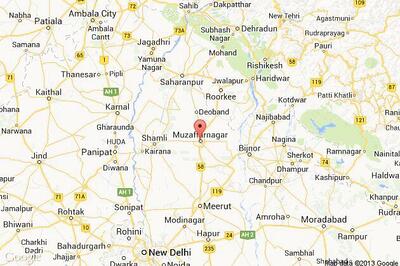
views
Throughout history, humans have settled near the water. Our greatest cities are found near rivers, and along coastlines where these rivers empty themselves into seas and oceans. Throughout our long history (and prehistory) on this planet, humans have evolved all manner of diets, based on where we live. But not one of those diets involve an absence of water. As our civilisations expanded, we learnt how to access groundwater. Today, we’ve taken out so much groundwater that we’ve affected the earth’s axial tilt.
Water is essential for life – we can’t live without it. And yet, many people around the world face water scarcity and lack access to safe and adequate sanitation. This is especially true in regions where rainfall is erratic and unpredictable, such as in some parts of Asia and Africa. In these regions, it feels criminal to use piped water, or groundwater for flushing toilets, when people don’t have water to drink.
However, we can’t not use water for sanitation. And this is where we need to think a little outside the box.
One possible solution to this challenge is to integrate rainwater harvesting systems in monsoon-proof toilets. Rainwater harvesting is the practice of collecting and storing rainwater for later use, such as for drinking, cooking, washing, or flushing. Monsoon-proof toilets are toilets that are designed to withstand heavy rainfall and flooding, and to prevent contamination of the collected rainwater by sewage or runoff.
Benefits of Rainwater Harvesting in Monsoon-Proof Toilets:
- Water Conservation: By using harvested rainwater for toilet use, we can significantly reduce the demand for freshwater. Rainwater harvesting allows communities to make the most of the seasonal abundance of rainfall and reduce reliance on groundwater or municipal water supply.
- Cost-Effective: Implementing rainwater harvesting systems in toilets can lead to significant cost savings for households and institutions in the form of reduced water bills.
- Environmentally Friendly: Rainwater harvesting in monsoon-proof toilets reduces the strain on freshwater sources, which are often overexploited. It also helps mitigate the impact of stormwater runoff, which can lead to erosion and pollution of natural water bodies.
Rainwater Harvesting Systems: Components, Challenges and Benefits
A rainwater harvesting system consists of three main components: a roof catchment area and gutters, a filtration and storage system, and a distribution and utilisation system.
Roof catchment area and gutters
The roof catchment area is the surface area of the roof that receives rainfall and directs it to the gutters. The size and shape of the roof catchment area determine the amount of rainwater that can be collected. Ideally, the roof should be flat or gently sloped, with no obstructions or overhangs that may reduce the catchment area or cause debris accumulation and the roof should be made of non-toxic and non-corrosive material.
The gutters are the channels that collect the rainwater from the roof and convey it to the filtration and storage system. These should be installed along the edges of the roof, with a slight slope towards the downspouts. They should be wide enough to accommodate the expected rainfall intensity and volume, and have enough outlets to avoid overflow. They must be cleaned regularly.
Filtration and storage systems
Filtration systems are used to remove suspended solids, organic matter, and microorganisms from the harvested rainwater before it is stored. The filtration system can be either passive (sand filters, charcoal filters, or biological filters) or active(pumps, filters, or ultraviolet lamps), depending on the level of treatment required.
The storage system is used to store the filtered rainwater until it is needed for use. Above-ground storage systems are easier to install and access, but may be more prone to evaporation, algae growth, or vandalism. Underground storage systems are more discreet and secure, but may require more excavation and higher maintenance costs. Ideally, the storage system should be made of durable and watertight materials, such as plastic, fibreglass, or concrete.
Distribution and utilisation of harvested rainwater
The distribution system is used to deliver the stored rainwater to toilets or other points of use. It can be either gravity-fed or pressure-fed, depending on the height difference between the storage tank and the toilets. Usually, gravity-fed systems are used with overhead storage tanks, and pressure-fed systems are used with underground storage.
The utilisation system is the final component of the rainwater harvesting system, which consists of the toilets that use the harvested rainwater for flushing. The toilets should be designed and installed to prevent leakage or overflow during heavy rainfall events, which may cause water wastage and contamination. One way to achieve this is to use monsoon-proof toilets that have dual flush mechanisms, low flush volumes, or adjustable flush valves.
Switching to Rainwater Harvesting Systems for Community Toilets
Applying rainwater harvesting to your own home is much simpler than doing so at the community level. As with any other community project, the first step is to build consensus with all stakeholders within the community – the users themselves, the local municipality, and those who will be in-charge of maintenance (which can also be positioned as a source of livelihood).
This is where platforms like Harpic and News18’s Mission Swachhta aur Paani can prove to be an invaluable source. For 3 years now, Mission Swachhta aur Paani has served as a reliable repository of information on every conceivable topic around toilet use, and how it impacts us individually, as well as the larger society. Moreover, it also serves as a platform that brings together the right stakeholders together, to help solve some of our biggest challenges around toilet use and maintenance.
Mission Swachhta aur Paani advocates inclusive sanitation, ensuring access to clean toilets for everyone. It promotes equality regardless of gender, abilities, castes, or classes, emphasising that clean toilets are a shared responsibility. It works by enabling us – by giving us the information we need, by sparking ideas and conversation, by identifying ways in which we can contribute to something larger than ourselves.
Join us here, to learn how you can contribute to this national transformation and help create a society that not only takes care of everyone’s needs, but also contributes to a more sustainable future for us all.




















Comments
0 comment